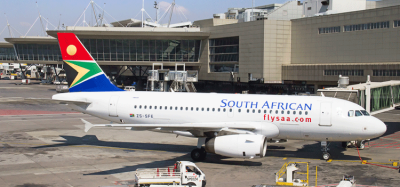Shifting the paradigm of airport security
- Like
- Digg
- Del
- Tumblr
- VKontakte
- Buffer
- Love This
- Odnoklassniki
- Meneame
- Blogger
- Amazon
- Yahoo Mail
- Gmail
- AOL
- Newsvine
- HackerNews
- Evernote
- MySpace
- Mail.ru
- Viadeo
- Line
- Comments
- Yummly
- SMS
- Viber
- Telegram
- Subscribe
- Skype
- Facebook Messenger
- Kakao
- LiveJournal
- Yammer
- Edgar
- Fintel
- Mix
- Instapaper
- Copy Link
Posted: 4 April 2013 | John S. Pistole, TSA Administrator
TSA Administrator, John S. Pistole, provides an insight into how the Transportation Security Administration is transforming airport security.
The Transportation Security Administration (TSA) continues its transformation from an organisation that screens every passenger in the same ‘one size fits all’ way, to a risk-based, intelligence-driven model. The TSA uses the latest technology, analyses and shares intelligence in real-time, and applies the principles of risk-mitigation and riskmanagement to carry out its mission to safeguard the free movement of people and commerce across all modes of transportation. It is an evolution we began in earnest in late- 2011, deploying several new initiatives and modifying some of our existing security screening protocols to more closely reflect this commitment to risk-based security. In large part, the operational changes I referenced can already be seen in many of the United States’ busiest airports. In the latter half of 2011, we began looking at additional information to help us determine if there were certain age-based decisions we could make. In other words, did current intelligence indicate the possibility of modifying our security screening protocols to expedite the movement of some passengers through the checkpoint based solely on their age?


TSA Administrator, John S. Pistole, provides an insight into how the Transportation Security Administration is transforming airport security.
The Transportation Security Administration (TSA) continues its transformation from an organisation that screens every passenger in the same ‘one size fits all’ way, to a risk-based, intelligence-driven model. The TSA uses the latest technology, analyses and shares intelligence in real-time, and applies the principles of risk-mitigation and riskmanagement to carry out its mission to safeguard the free movement of people and commerce across all modes of transportation. It is an evolution we began in earnest in late- 2011, deploying several new initiatives and modifying some of our existing security screening protocols to more closely reflect this commitment to risk-based security. In large part, the operational changes I referenced can already be seen in many of the United States’ busiest airports. In the latter half of 2011, we began looking at additional information to help us determine if there were certain age-based decisions we could make. In other words, did current intelligence indicate the possibility of modifying our security screening protocols to expedite the movement of some passengers through the checkpoint based solely on their age?
We believe the answer to that was, and is, yes. The first group of passengers to receive expedited checkpoint security screening were children 12 years of age or younger. We began a pilot programme at a small number of airports in early-2012, and the feedback from the travelling public was immediate and positive, leading us to expand this initiative to all 450 airports across the U.S. Since then, more than 33 million children have made their way through airport security more quickly, and perhaps a little easier, without compromising security.
Similar changes were then tested for passengers aged 75 and older. We followed the model established for young travellers and tested the concept in a handful of airports, analysed the results and rolled it out across the country in the first half of 2012. Recent data indicate this change has allowed another 12 million passengers to experience modified security screening since we implemented the new protocols. In both cases – whether a passenger is younger than 12 or older than 75 – the changes to the way they are screened are the same; belts, shoes and light jackets can stay on, laptop computers do not need to be removed from their cases and 3-1-1 bags can remain in their carry-on bag, facilitating a more pleasant experience.
Perhaps the most impactful initiative begun under the broad umbrella of risk-based security is TSA Pre✓™, a known and trusted traveller type of programme built on the understanding that most passengers pose no risk to aviation security. TSA Pre✓™ allows select frequent flyers of participating airlines and members of U.S. Customs and Border Protection Trusted Traveler Programs, who are flying on participating airlines, to receive expedited screening benefits during domestic travel.
In February 2012, U.S. Department of Homeland Security Secretary Janet Napolitano and I spoke to reporters at Ronald Reagan Washington National Airport and announced a goal to implement TSA Pre✓™ at 35 of the busiest airports in the United States by the end of 2012. We met that objective, and as of January 2013 more than six million passengers have been safely screened through TSA Pre✓™. There are a number of measurable benefits associated with such an approach to aviation security. Increasing throughput at our nation’s busiest airports provides significant value to frequent, trusted travellers. At the same time, reducing the amount of time our officers devote to screening low-risk travellers increases the resources available to deter and detect the next attack. Reducing the size of the haystack makes finding the needle much more likely. This is a fundamental principle on which risk-mitigation strategies such as TSA Pre✓™ are built.
The ongoing success of several other risk-based initiatives at airports around the country comes as a result of enhanced cooperation between the TSA, the airline industry, and the travelling public. One example of this is a known crew member programme through which commercial airline pilots and flight crews receive expedited security screening from Transportation Security Officers. Airline pilots are trusted with the security of the aircraft and the lives of every passenger onboard each time they fly. Flight crew members all undergo similar background checks as a condition of their employment. These individuals are known and if they are in good standing with their employers, they do not pose a security risk and should be screened accordingly. We currently have approximately 170,000 pilots and flight attendants going through expedited screening at our busiest airports.
As men and women who put their lives on the line every day, United States active duty military members also receive expedited security screening at airport checkpoints around the country. Beyond military members, we are also continuing to explore other ways to mitigate risk and expand the population of known and trusted travellers. Checkpoint security screening is only one layer of a multilayered security system that stretches from kerbside to cockpit, and while the capability to detect, deter or disrupt a potential attack exists in any single layer, the combined effect of all layers produces a formidable aviation security system that is becoming the gold standard around the world.
Consider the steady string of attempted attacks in the 11 years since 9/11; Richard Reid, the so-called shoe bomber in December 2001, the August 2006 liquids plot to bring down multiple aircraft between the UK and the United States, the Christmas Day 2009 failed bombing by Umar Farouk Abdulmutallab and the October 2010 Yemen cargo plot in which sophisticated IEDs were placed inside toner cartridges and placed on cargo flights coming to the United States. In each instance, the attempt to bring down an aircraft began overseas, targeting flights originating elsewhere and flying into the United States.
Most recently, in the spring of 2012, due to outstanding international intelligence collection, operations and coordination, the U.S. and other governments thwarted a second attempt by AQAP – al-Qaeda on the Arabian Peninsula – to carry out an attack on a passenger aircraft by using an improvised explosive device, or IED, that was completely non-metallic. It featured an innovative design and concealment technique that was similar to the Christmas Day 2009 attempted attack. This device, however, involved a new type of explosive, as well as a more sophisticated initiation and detonation system than the device that failed in 2009. This new device also had a new level of redundancy, or a backup, in the event the primary system failed. Clearly, this is evidence that these groups are going to school on what they believe are the limits of our detection capabilities, and it shows that their intentions to attack U.S. and western interests has not wavered.
This most recent attempt underscores the fact that our enemies still consider the destruction of passenger or cargo aircraft either inside or flying into or over the United States as their number one priority. Inside the TSA, our greatest concerns are not necessarily with those on a watch list or with some known affiliation or association with terrorist organisations. We know these individuals warrant and receive greater scrutiny and screening when and if they attempt to fly. Instead, it’s the unknown radicalised individual who has somehow acquired the skill and ability to build an improvised explosive device and tries to bring it onboard an aircraft, whether in checked or carry-on baggage, but has not surfaced on anyone’s radar. That’s why intelligence is critical, and it is why collaboration, both domestically and internationally, is essential, and why our efforts as one piece of a global aviation security spectrum must remain focused.
Biography
John S. Pistole was confirmed as the Trans – portation Security Administration’s (TSA) fifth Administrator in July 2010. As TSA Administrator, John oversees management of a 60,000-strong workforce, the security operations of more than 450 federalised airports throughout the U.S., the Federal Air Marshal Service (FAMS), and the security for highways, railroads, ports, mass transit systems and pipelines. John came to TSA as a 26-year veteran of the FBI with extensive national security and counter – terrorism experience. After the tragic events of September 11, 2001, he was put in charge of the FBI’s greatly expanded counterterrorism program, eventually becoming the FBI’s Executive Assistant Director for Counterterrorism and Counter – intelligence. In 2004, John was named Deputy Director for the FBI. John has led or been involved in several high profile investigations, including the attempted car bombing in Times Square on 1 May 1 2010; the 25 December 2009 attempted attack on Northwest Flight 253; the plot against New York City subways in 2009; the 2006 UK liquid explosives plot; and the May 2003 suicide bombings of three housing compounds in Riyadh, Saudi Arabia, in which 35 people died, including nine Americans. In 2007, John received the Edward H. Levy Award for Outstanding Professionalism and Exemplary Integrity. He is a recipient of the 2005 Presidential Rank Award for Distinguished Executive. Prior to joining the FBI in 1983, John practiced law for two years. He is a graduate of Anderson University (Indiana) and Indiana University School of Law – Indianapolis.

















